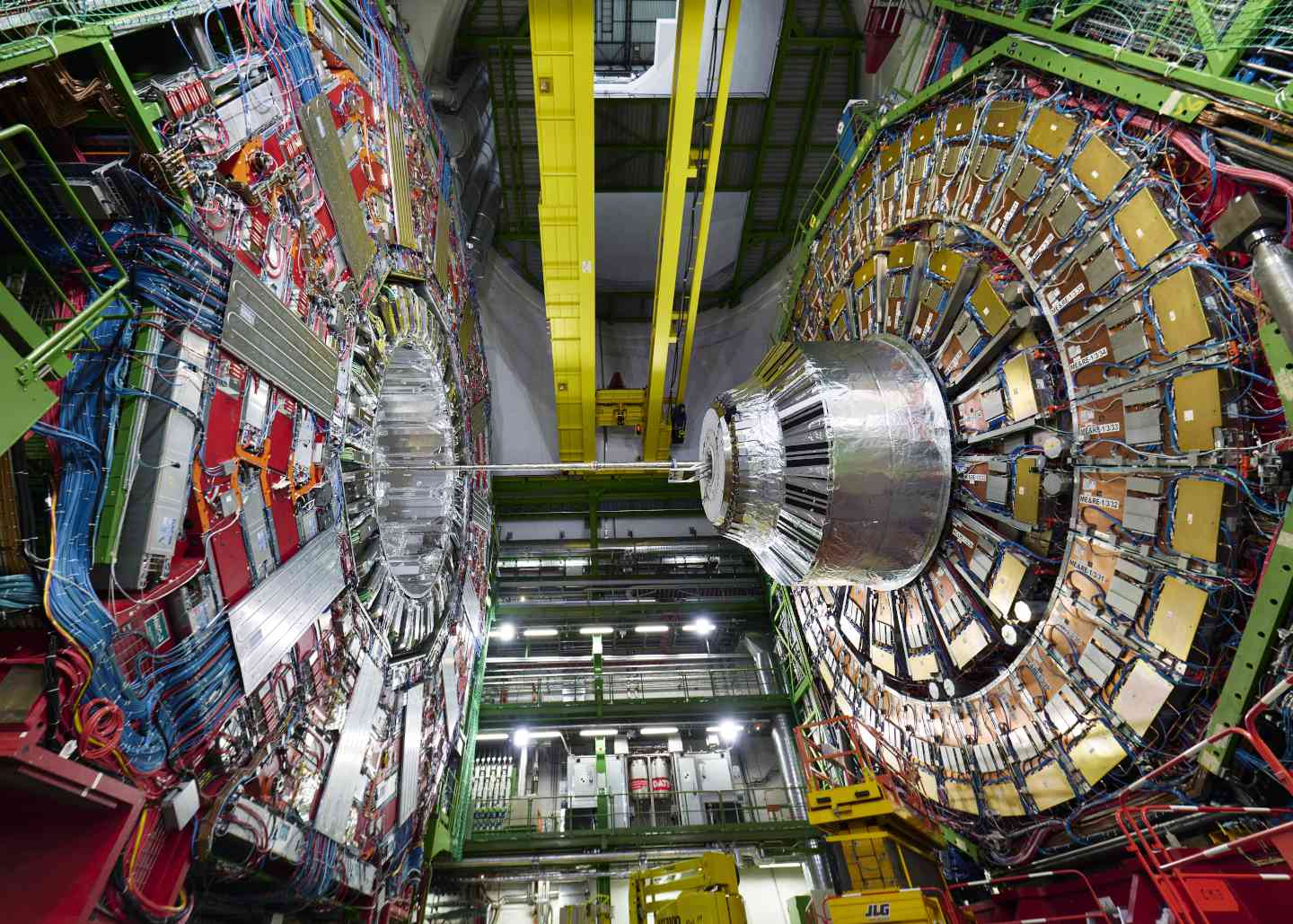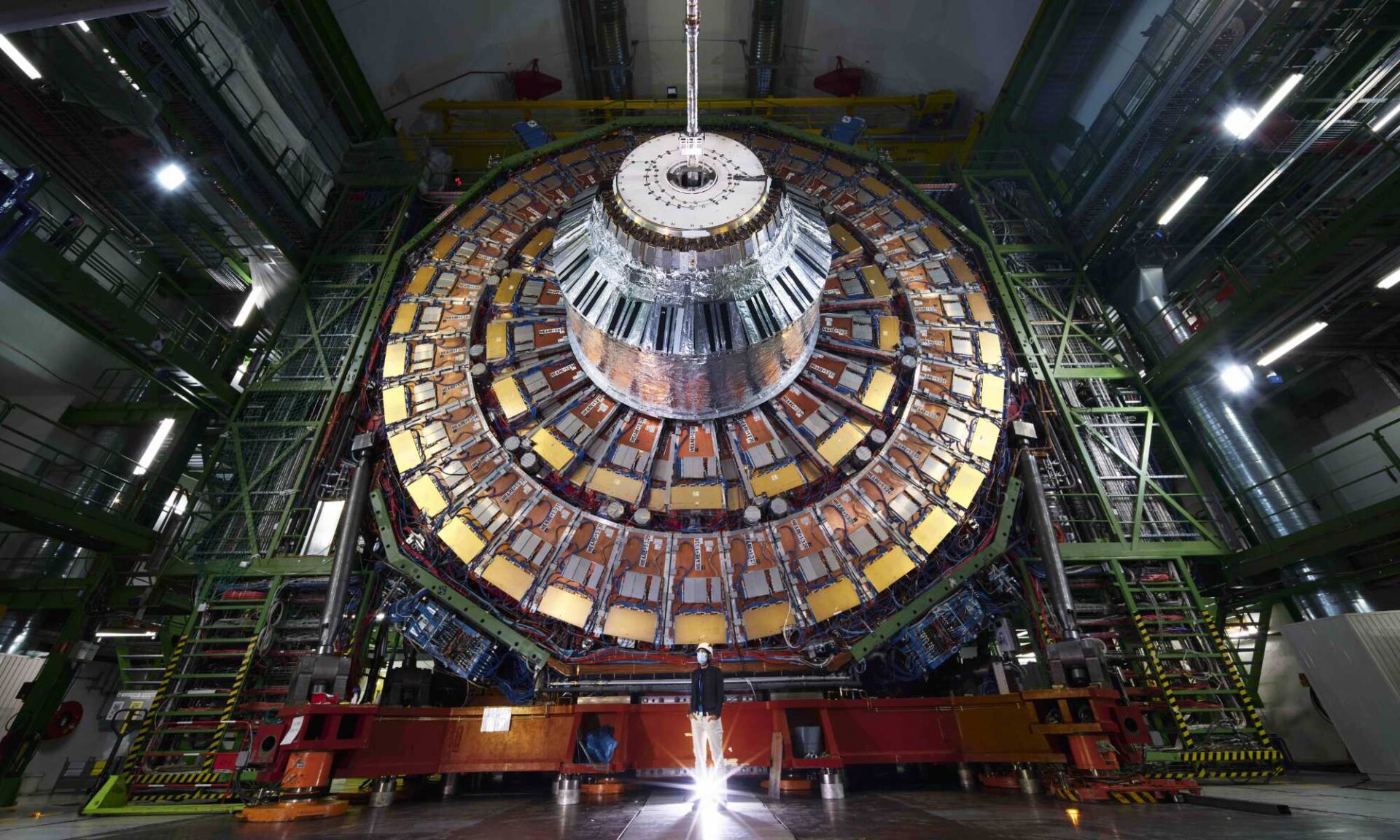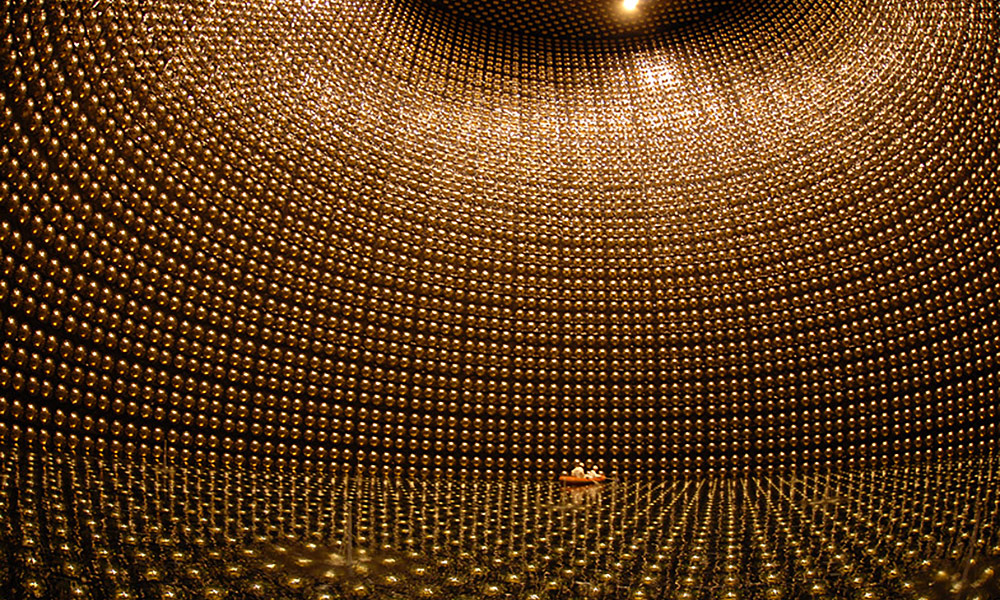Rochester researchers involved with CERN make groundbreaking measurements of the electroweak mixing angle, strengthening an understanding of particle physics.
In the quest to decode the mysteries of the universe, researchers from the University of Rochester have been involved for decades with international collaborations at the European Organization for Nuclear Research, more commonly known as CERN.
Building on their extensive involvement at CERN, particularly within the CMS (Compact Muon Solenoid) Collaboration, the Rochester team—led by Arie Bodek, the George E. Pake Professor of Physics—recently achieved a groundbreaking milestone. Their achievement centers on measuring the electroweak mixing angle, a crucial component of the Standard Model of Particle Physics. This model describes how particles interact and precisely predicts a plethora of phenomena in physics and astronomy.
“The recent measurements of the electroweak mixing angle are incredibly precise, calculated from collisions of protons at CERN, and strengthen an understanding of particle physics,” Bodek says.
The CMS Collaboration brings together members of the particle physics community from across the globe to better understand the basic laws of the universe. In addition to Bodek, the Rochester cohort to the CMS Collaboration includes principal investigators Regina Demina, a professor of physics, and Aran Garcia-Bellido, an associate professor of physics, along with postdoctoral research associates and graduate and undergraduate students.
Discoveries at CERN
Located in Geneva, Switzerland, CERN is the world’s largest particle physics laboratory, renowned for its groundbreaking discoveries and cutting-edge experiments.
Rochester researchers have a long history of work at CERN as part of the CMS Collaboration, including playing key roles in the 2012 discovery of the Higgs boson—an elementary particle that helps explain that origin of mass in the universe.
The collaboration’s work includes collecting and analyzing data gathered from the Compact Muon Solenoid detector at CERN’s Large Hadron Collider (LHC), the world’s largest and most powerful particle accelerator. The LHC consists of a 17-mile ring of superconducting magnets and accelerating structures built underground and spanning the border between Switzerland and France.
The primary purpose of the LHC is to explore the fundamental building blocks of matter and the forces that govern them. It achieves this by accelerating beams of protons or ions to nearly the speed of light and smashing them into each other at extremely high energies. These collisions recreate conditions similar to those that existed fractions of a second after the Big Bang, allowing scientists to study the behavior of particles under extreme conditions.

Unraveling unified forces
In the 19th century, scientists found that the different forces of electricity and magnetism were linked: a changing electric field produces a magnetic field and vice versa. The discovery formed the basis of electromagnetism, which describes light as a wave and explains many phenomena in optics, along with describing how electric and magnetic fields interact.
Building upon this understanding, physicists in the 1960s discovered that electromagnetism is connected to another force—the weak force. The weak force operates within the nucleus of atoms and is responsible for processes such as radioactive decay and powering the sun’s energy production. This revelation led to the development of the electroweak theory, which posits that electromagnetism and the weak force are actually low-energy manifestations of a unified force called the unified electroweak interaction. Key discoveries, such as the Higgs boson, have confirmed this concept.
Exploring electroweak interaction
The CMS Collaboration recently performed one of the most precise measurements to date related to this theory, by analyzing billions of proton-proton collisions at the LHC at CERN. Their focus was measuring the weak mixing angle, a parameter describing how electromagnetism and the weak force blend together to create particles.
Previous measurements of the electroweak mixing angle have sparked debate within the scientific community. However, the latest findings closely align with predictions from the Standard Model of Particle Physics. Rochester graduate student Rhys Taus and postdoctoral research associate Aleko Khukhunaishvili implemented new techniques to minimize systematic uncertainties inherent in this measurement, enhancing its precision.
Understanding the weak mixing angle sheds light on how different forces in the universe work together at the smallest scales, deepening an understanding of the fundamental nature of matter and energy.
“The Rochester team has been developing innovative techniques and measuring these electroweak parameters since 2010 and then implementing them at the Large Hadron Collider,” Bodek says. “These new techniques have heralded a new era of precision tests of the predictions of the Standard Model.”
For more details on the research, check out the CERN news release, the CMS results summaries, and the CMS physics briefing.





